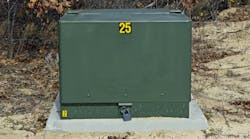Changing the tap on a transformer can solve a problem at the time, especially in the summer when electric utility voltages start to sag a bit due to high electricity demands. It’s a reasonable fix, whereby the process of changing the tap requires only de-energizing the facility for a brief period. However, this fix can cause a lot of grief down the road, as the electric utility voltages fluctuate throughout the year.
In the United States, a typical electric utility conforms to the NEMA standard “ANSCI C84.1 – Electrical Power Systems and Equipment – Voltage Ratings (60 Hertz).” The standard outlines the voltage bandwidth the electric utility should operate within. For the low voltage class, which is defined as 1,000V or less, the typical bandwidth is ±5% of the nominal system voltage. However, electric utility circuits are not always static, and can be reconfigured many times in a year to accommodate electrical demand and to provide reliable service. This dynamic configuration can create high or low voltages at a site when the facility manager is least expecting it. Now a planned fix has become an unplanned nightmare, where equipment is starting to randomly misoperate.
Besides changing the tap, there are other solutions available to control the voltage losses at a site. Most solutions focus on the electrical efficiency of a facility, but a good place to start is preventive maintenance. A regularly scheduled maintenance program provides an opportunity to identify loose or worn out connections, which cause high impedances and large voltage drops. The next step is to review the present load demand. Oftentimes, a facility has slowly gained new electrical equipment, but the infrastructure has not been kept up at the same pace. Consider rebalancing single-phase loads. Moving load to an adjacent phase helps with load imbalances and reduces the voltage drop on heavily loaded phases. Also, consider adding power factor correcting devices or high-efficiency devices to reduce current draw. These solutions and devices support a sustainable solution for a facility and keep the voltages within manageable range.



